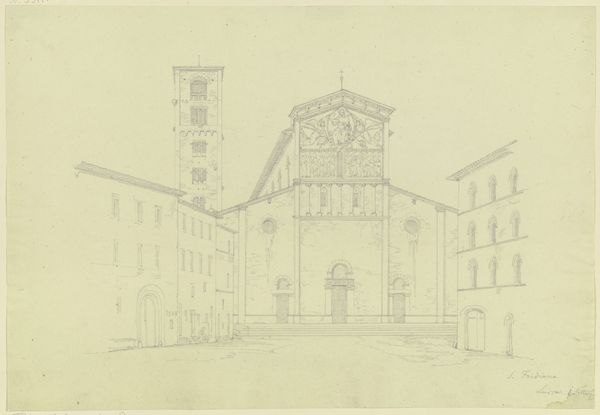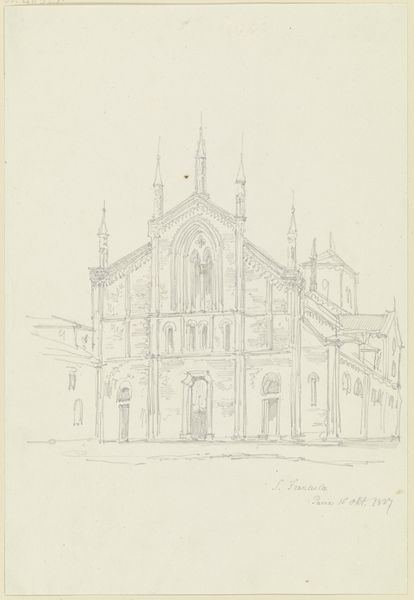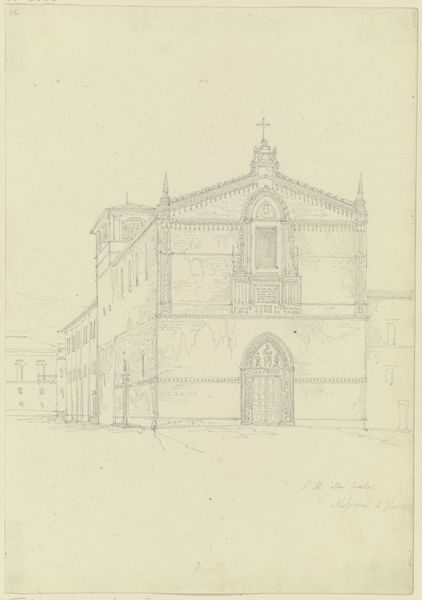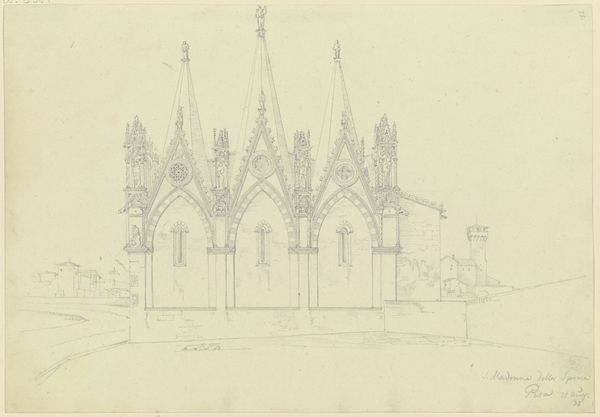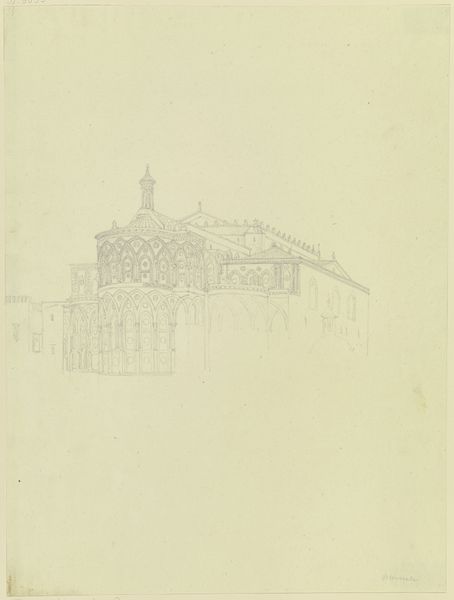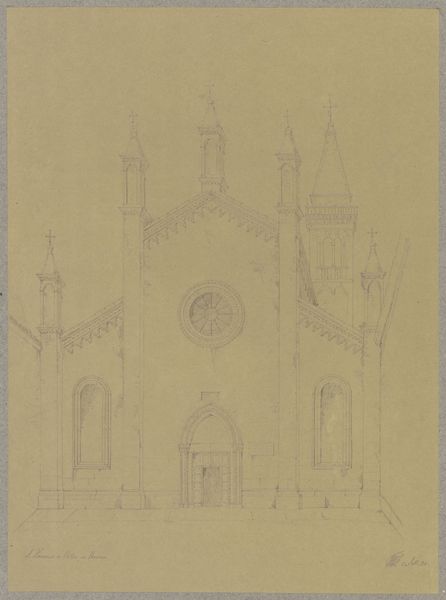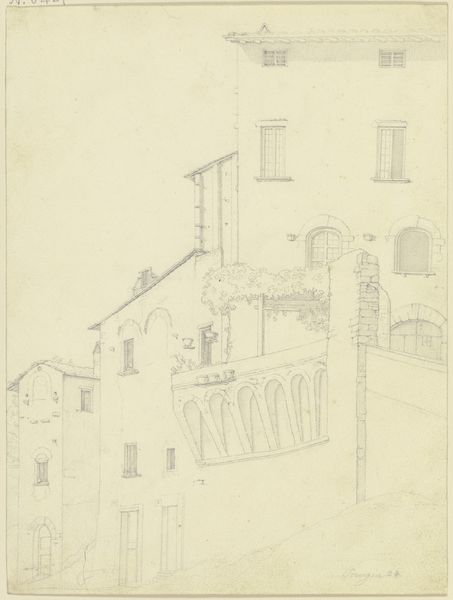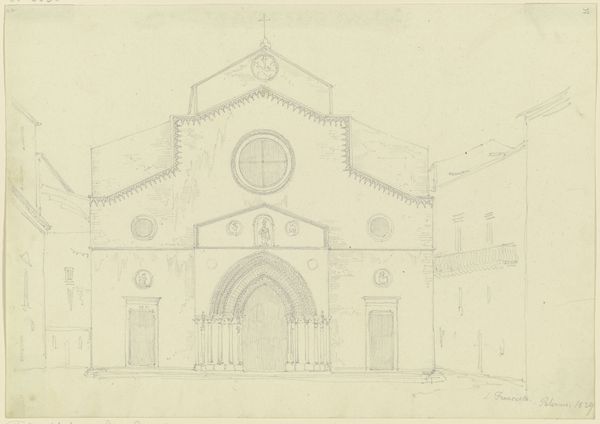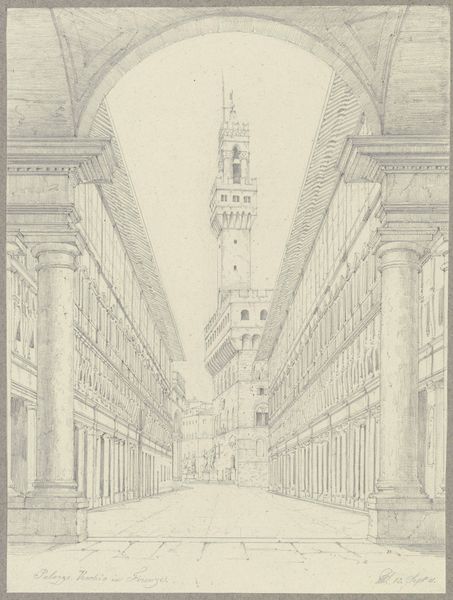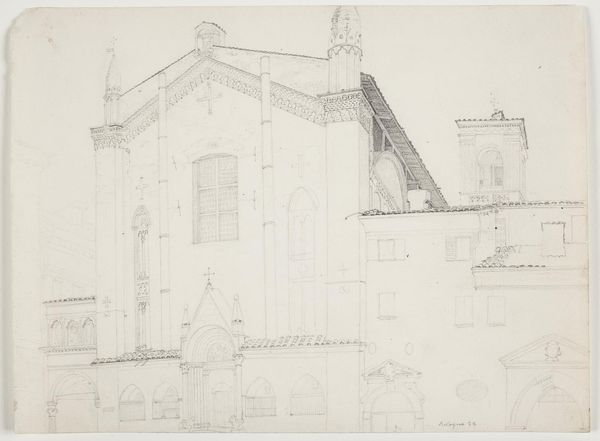
drawing, etching, pencil, architecture
#
architectural sketch
#
drawing
#
16_19th-century
#
etching
#
etching
#
pencil
#
architecture
Copyright: Public Domain
Curator: Let's consider this architectural sketch, a drawing rendered in pencil and etching titled "S. Maria della Spina in Pisa" by Friedrich Maximilian Hessemer, dating from 1820 to 1830, part of the Städel Museum collection. What impressions does it evoke for you? Editor: Haunting, strangely. There's a precision to the detail that almost feels unsettling. The lightness of the medium makes it feel as if the building is sketched on a dream. There's also this incredible facade with so much architectural finery and the double portals seem so starkly simple. It's odd. Curator: The Church of Santa Maria della Spina has an interesting history. Built to house a relic, purportedly one of the thorns from Christ's crown, it embodies more than just architectural aesthetics; it's a vessel for deeply held beliefs and powerful symbols. Editor: Yes, thorns have historically symbolized both suffering and sacredness, depending on the cultural context. This rendering doesn't shy away from either emotion, it presents the holy relic as encased by these heavy geometric forms. It feels intentionally stoic in design, almost confrontational in how imposing it feels, even for a simple line drawing. Curator: Precisely, and I wonder, considering its location along the Arno, the deliberate choice to create this imposing Gothic structure reflects the need for permanence against a city constantly in flux. Hessemer does very successfully highlight this quality. Editor: I find myself trying to imagine Pisa when Hessemer captured it—before mass tourism, before the world became quite so interconnected. The simplicity of the line work here underscores the sense of distance between us and the artist. Curator: It also emphasizes how much we imbue architecture with narrative and memory. This church, regardless of the relic, became a symbol of Pisa itself. Editor: Indeed. And viewing it through Hessemer's eyes—a fleeting vision of stone and faith, expertly captured—reminds us of the weight buildings hold beyond their bricks and mortar. Thank you, this image is now embedded in my brain. Curator: Mine too! An interesting example of how lines alone can conjure up not just a building but an era, a belief, and a lasting emotion.
Comments
No comments
Be the first to comment and join the conversation on the ultimate creative platform.
